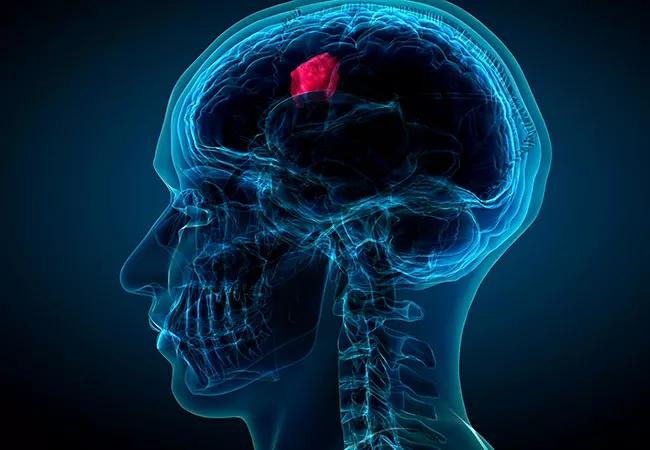Highlights from one of the most active therapeutic clinical trials programs in the U.S.

When treated with standard therapies, patients diagnosed with glioblastoma (GBM) live an average of 15 months after diagnosis. This daunting prognosis has put physicians from Cleveland Clinic’s Rose Ella Burkhardt Brain Tumor and Neuro-Oncology Center on the hunt for better options for patients with GBM.
Advertisement
Cleveland Clinic is a non-profit academic medical center. Advertising on our site helps support our mission. We do not endorse non-Cleveland Clinic products or services. Policy
As home of one of the largest and most active brain tumor clinical trials programs in the U.S., the center is focused on rapid translation of basic research findings — often from Cleveland Clinic’s own Lerner Research Institute — to clinical testing. The four trials profiled below are examples of Cleveland Clinic-led investigations resulting from this type of translation, with the goal of offering promising new alternatives for patients with GBM.
Effective treatment options for recurrent GBM are scarce, but neuro-oncologist Manmeet Ahluwalia, MD, is principal investigator of a trial that could change that. This phase 2 study of pembrolizumab plus the immunotherapy vaccine known as SurVaxM builds on the results of recent trials demonstrating SurVaxM’s safety and efficacy in treating GBM.
“The vaccine was generally well tolerated in the phase 1 and 2 trials,” explains Dr. Ahluwalia, Associate Director of the Burkhardt Brain Tumor and Neuro-Oncology Center. “With this trial, our hope is to achieve longer progression-free survival for patients with recurrent disease by adding pembrolizumab to the vaccine.”
SurVaxM appears to be a promising option for patients with GBM. It stimulates the immune system to kill tumor cells that contain survivin, a protein that helps cancer cells resist conventional treatments.
Eligible patients have World Health Organization grade IV glioma with documented first recurrence and a Karnofsky performance status of 70 or higher (or ECOG 0-2). Patients receive pembrolizumab in addition to the SurvaxM/sargramostim/Montanide regimen validated in previous trials. Accrual is ongoing.
Advertisement
Another study aimed at recurrent GBM uses nivolumab, a checkpoint inhibitor with efficacy in several tumor types, plus either a standard or low dose of bevacizumab, an antiangiogenic that has demonstrated improved survival in patients with recurrent GBM.
“We have increasing evidence that antiangiogenics can strengthen the anti-tumor effects of immunotherapies by lowering immunosuppression and increasing dendritic cell and T cell activity,” says Dr. Ahluwalia. The randomized, open-label, phase 2 trial is exploring the efficacy, safety and optimal dosing regimen for this combination therapy. Eligibility criteria are one GBM recurrence and previous treatment with radiotherapy.
“We have several patients doing well on this study,” notes Dr. Ahluwalia, adding that the trial recently completed enrollment.
Newly diagnosed patients may benefit from ibrutinib, a small-molecule compound used in some lymphomas and leukemias. A phase 1 clinical trial is testing various ibrutinib dosages for safety and efficacy in patients with newly diagnosed GBM.
The glioma stem cell (GSC) population that gives rise to GBM recurrence has been an elusive target in treatment development. Earlier work from Lerner Research Institute found the mechanism through which GSCs learn to resist radiation therapy and replicate, spread and promote tumor growth. In a preclinical mouse model of GBM and cultured human GBM cells (recapped here), ibrutinib suppressed GSC-driven tumor growth, potently induced GSC death and significantly increased survival.
Advertisement
The study combines ibrutinib with radiation in patients with unmethylated MGMT GBM and adds temozolomide for patients with methylated MGMT GBM.
Another investigation targeting GSCs uses ruxolitinib, a Janus kinase (JAK) inhibitor. Ruxolitinib targets the JAK-STAT pathway, which has been implicated in GBM as a promoter of tumor cell survival, growth and invasion. Levels of JAK 1/2 and STAT3 are increased in GBM tissues.
Inhibiting JAK2 reduces survival and proliferation of glioma cells in vitro, and JAK2/STAT3 inhibition slows disease progression in animal models of GBM. The current phase 1 trial tests the efficacy, safety and tolerability of ruxolitinib combined with radiation and temozolomide for newly diagnosed grade 3 gliomas and GBM.
“We anticipate that the radiation will facilitate breakdown of the blood-brain barrier and better delivery of ruxolitinib to the tumor,” says Dr. Ahluwalia, the study’s principal investigator. The study combines ruxolitinib with radiation in patients with unmethylated MGMT GBM. Patients with methylated MGMT GBM receive various doses of ruxolitinib, temozolomide and radiation.
Though these studies are mechanistically diverse, they share the same goal: the elusive extension of survival beyond 15 months for patients with GBM.
“Conventional approaches just have not worked,” says Dr. Ahluwalia. “These trials are translating scientific discoveries to the bedside quickly, as we need novel and more-effective therapeutic options for these patients. In collaboration with our basic science colleagues in laboratories, we also are working to identify patients who will derive benefit from particular treatments based on genomic and blood-based biomarkers.”
Advertisement
Dr. Ahluwalia disclosed the following commercial relationships relevant to the studies profiled above: consulting fees and contracted research from AbbVie, and contracted research and stock options with MimiVax.
Advertisement
Advertisement

First-of-its-kind research investigates the viability of standard screening to reduce the burden of late-stage cancer diagnoses

Global R&D efforts expanding first-line and relapse therapy options for patients

Study demonstrates ability to reduce patients’ reliance on phlebotomies to stabilize hematocrit levels

A case study on the value of access to novel therapies through clinical trials

Findings highlight an association between obesity and an increased incidence of moderate-severe disease

Cleveland Clinic Cancer Institute takes multi-faceted approach to increasing clinical trial access 23456

Key learnings from DESTINY trials

Overall survival in patients treated since 2008 is nearly 20% higher than in earlier patients